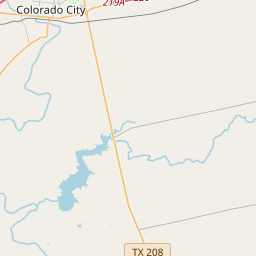Texas & Pacific Railway
Historical marker location:






Railroad made this "Cattle Capital of West Texas" in 1880s. Cattlemen Frank Byler, Clay Mann, Winfield Scott, C.C. Slaughter and others brought herds here early as 1877, when last of the buffalo were being exterminated. A Texas Ranger unit was stationed in area to guard against straggling Indians. After Texas & Pacific locators staked course through this valley, rancher George Waddell persuaded A.W. Dunn of Coleman to build a store here. Lumber came by wagon from Round Rock (about 300 mi. SE), and was sparingly used. Store had tarpaulin roof, dirt floor, and was opened in late summer 1880. Soon two saloons were also in business. Railroaders--including bridge crew of A.J. Coe--arrived in the fall. By April 16, 1881, when the Texas & Pacific initiated train service to this site, some 350 people lived here in tents and dugouts, and had a newly organized county government, a school, post office and newspaper. This was terminus for months, while river bridge was being built. Then and until late 80s, this was shipping point for such remote places as ranches of Charles Goodnight and the XIT, near present Amarillo. The T. & P. freighted in tons of windmills and barbed wire, shipped out thousands of cattle--giving this city renown.
(1970)
As one of the most visible programs of the Texas Historical Commission (THC), historical markers commemorate diverse topics in Texas history, including: the history and architecture of houses, commercial and public buildings, religious congregations, and military sites; events that changed the course of local and state history; and individuals who have made lasting contributions to the state, community organizations, and businesses.
Texas is known for its barbecue, and one of the most famous barbecue restaurants in the state is Kreuz Market in Lockhart. The restaurant has been in operation since 1900 and is still family-owned.
In the mid-1800s, settlers began to arrive in the area, attracted by the land's fertile soil and the promise of a new frontier. One of the earliest settlements was the town of Colorado City, which was founded in 1881. Originally established as a rail station, the town quickly grew and became the county seat of Mitchell County.
A significant event in the county's history occurred in 1928, when the discovery of oil in the region brought a wave of prosperity and economic growth. Oil companies flocked to the area, and Mitchell County experienced a boom as oil fields were developed and wells were drilled. The industry continued to play a significant role in the county's economy, attracting workers and spurring the growth of towns such as Loraine and Westbrook.
Over the years, Mitchell County has witnessed both progress and challenges. The construction of Lake Colorado City in the 1930s provided a recreational outlet for residents and helped with water conservation efforts. However, the county, like many in Texas, faced hardships during the Great Depression and the Dust Bowl, which had a profound impact on the agricultural sector.
Today, Mitchell County is known for its friendly communities, natural beauty, and rich heritage. It remains an important area for agriculture, with cotton, wheat, and cattle being the main industries. The county also offers opportunities for outdoor activities such as hunting, fishing, and hiking, allowing residents and visitors to connect with the region's history and natural resources.
Mitchell County Timeline
This timeline provides a condensed summary of the historical journey of Mitchell County, Texas.
- 1876 - Mitchell County is established
- 1880s - Ranching becomes the main industry in the county
- 1882 - Colorado City is founded as the county seat
- 1907 - Oil is discovered in Mitchell County, leading to an economic boom
- 1925 - Colorado City experiences a major oil boom
- 1942-1946 - During World War II, an internment camp for German prisoners of war is established in Mitchell County
- 1962 - Lake Colorado City State Park is established
- 1976 - The historic Llano Estacado Wind Ranch is built in Mitchell County
- 1994 - Mitchell County Historical Commission is formed
- 2004 - The Windy Point Park and Campground is opened
- 2011 - Texas Parks and Wildlife Department opens the newly renovated Mitchell County Courthouse Museum